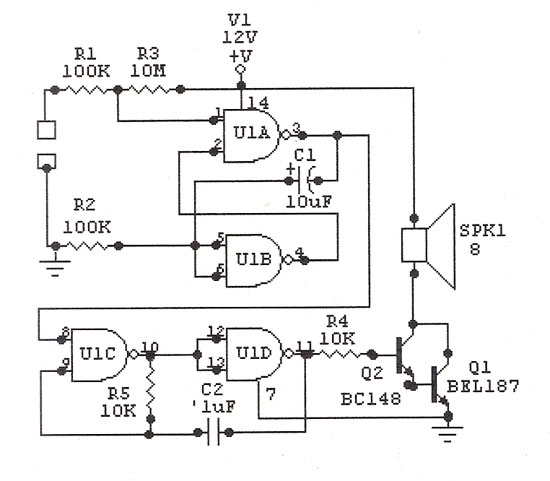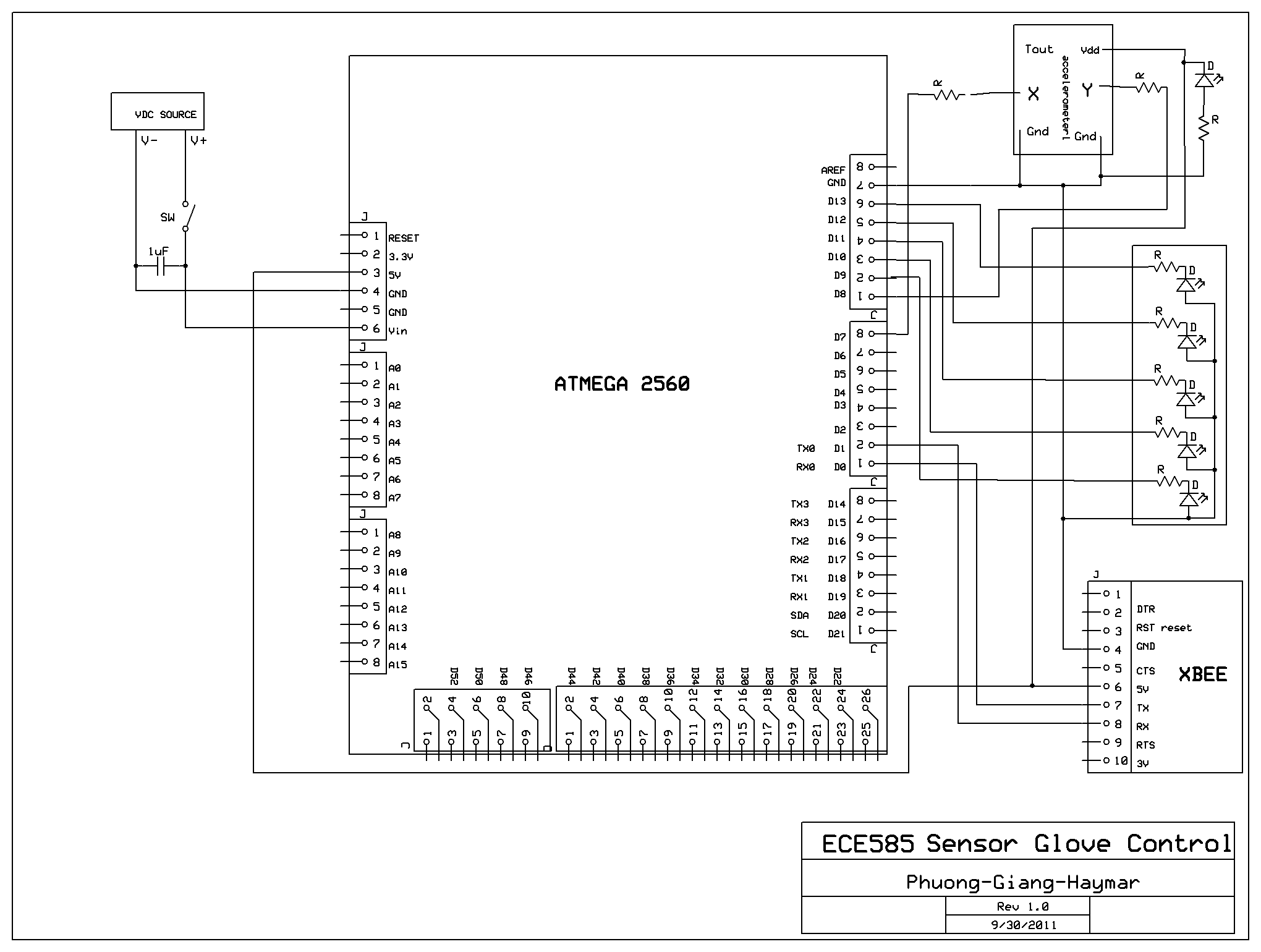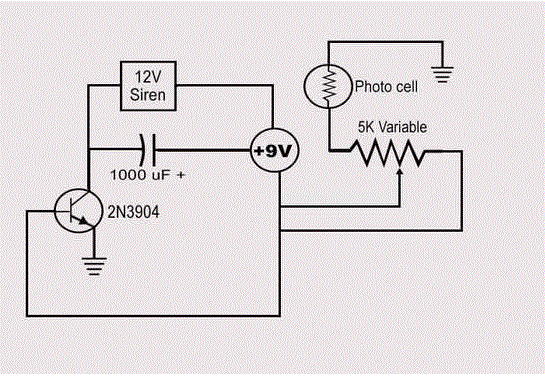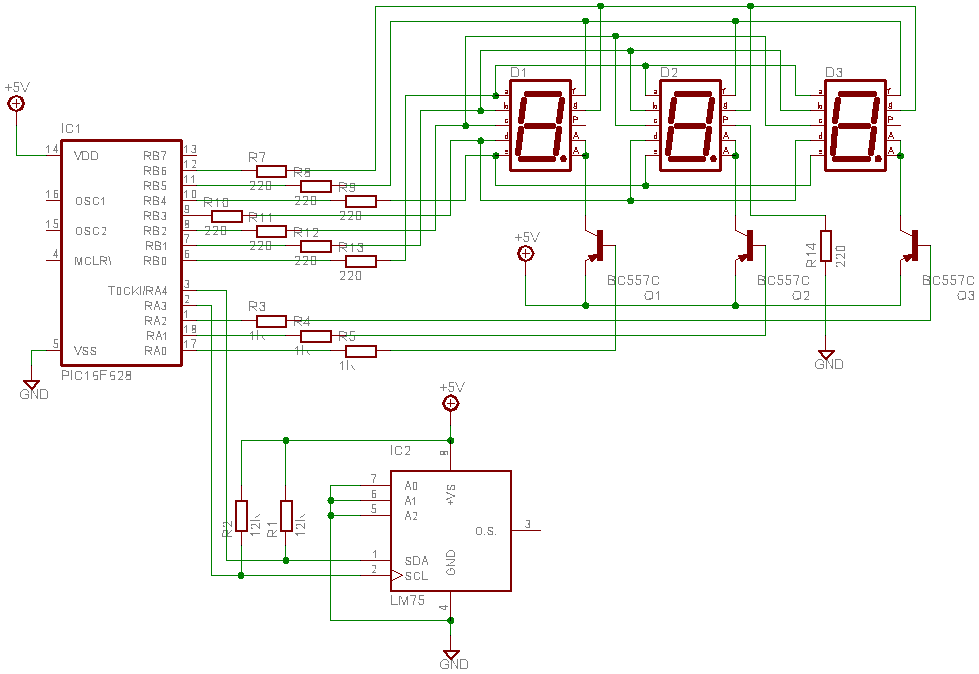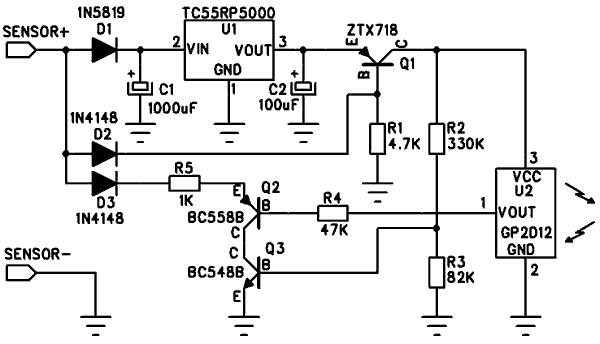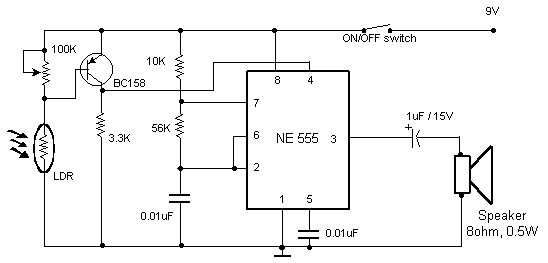
Shadow Sensor Alarm
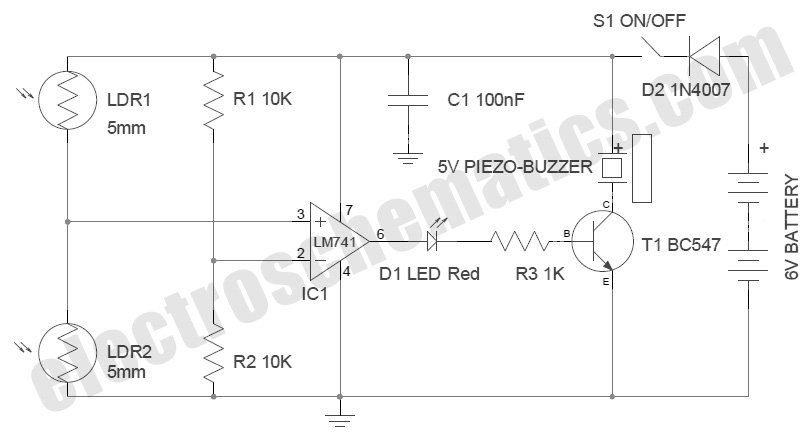
Shadow sensors are commonly utilized to detect the movement of an individual in a confined space. Numerous previously published circuits exhibit a significant limitation, as they only...
Shadow sensors operate by detecting changes in light intensity caused by the movement of an object, such as a person, within a designated area. These sensors are typically composed of a light-sensitive component, such as a phototransistor or photodiode, and associated circuitry that interprets the changes in light levels.
In a typical shadow sensor circuit, the light-sensitive component is placed in a position where it can monitor the ambient light conditions unobstructed. When a person enters the sensor's detection zone, their body blocks the light source, causing a drop in the light intensity detected by the sensor. This change can be translated into an electrical signal, which can then be processed by additional circuitry, such as amplifiers or microcontrollers, to trigger an output action, such as activating an alarm or lighting system.
To enhance the performance of shadow sensors, it is crucial to design the circuit with considerations for sensitivity and response time. For instance, incorporating adjustable resistors can allow for fine-tuning the threshold levels at which the sensor activates. Additionally, integrating hysteresis into the circuit design can prevent false triggering due to minor fluctuations in light levels.
Furthermore, employing multiple shadow sensors in a network can mitigate the limitations of single-sensor systems. By using a combination of sensors placed at strategic locations, the circuit can provide comprehensive coverage of a space, ensuring reliable detection of movement. This multi-sensor approach can also facilitate the implementation of advanced algorithms for motion tracking and analysis, further enhancing the capabilities of the shadow detection system.
Overall, shadow sensors play a vital role in various applications, including security systems, automated lighting control, and occupancy detection, making their design and implementation critical in modern electronic systems.Shadow sensors are widely used to detect the movement of a person in a confined area. Many circuits published earlier have a serious drawback that only one.. 🔗 External reference
Shadow sensors operate by detecting changes in light intensity caused by the movement of an object, such as a person, within a designated area. These sensors are typically composed of a light-sensitive component, such as a phototransistor or photodiode, and associated circuitry that interprets the changes in light levels.
In a typical shadow sensor circuit, the light-sensitive component is placed in a position where it can monitor the ambient light conditions unobstructed. When a person enters the sensor's detection zone, their body blocks the light source, causing a drop in the light intensity detected by the sensor. This change can be translated into an electrical signal, which can then be processed by additional circuitry, such as amplifiers or microcontrollers, to trigger an output action, such as activating an alarm or lighting system.
To enhance the performance of shadow sensors, it is crucial to design the circuit with considerations for sensitivity and response time. For instance, incorporating adjustable resistors can allow for fine-tuning the threshold levels at which the sensor activates. Additionally, integrating hysteresis into the circuit design can prevent false triggering due to minor fluctuations in light levels.
Furthermore, employing multiple shadow sensors in a network can mitigate the limitations of single-sensor systems. By using a combination of sensors placed at strategic locations, the circuit can provide comprehensive coverage of a space, ensuring reliable detection of movement. This multi-sensor approach can also facilitate the implementation of advanced algorithms for motion tracking and analysis, further enhancing the capabilities of the shadow detection system.
Overall, shadow sensors play a vital role in various applications, including security systems, automated lighting control, and occupancy detection, making their design and implementation critical in modern electronic systems.Shadow sensors are widely used to detect the movement of a person in a confined area. Many circuits published earlier have a serious drawback that only one.. 🔗 External reference
